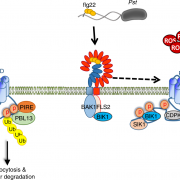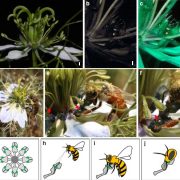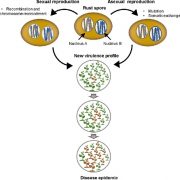
Interplay between phosphorylation and ubiquitination is key for regulating reactive oxygen species during plant immunity (Nature Comms)
Plant Science Research WeeklyReactive oxygen species (ROS) are essential secondary messengers for rapid transmission of local and long-distance signalling in plants. Respiratory oxidase homologs (RBOHs) are the family of enzymes in plants that produce extracellular ROS, with RBOHD being the primary oxidase in Arabidopsis for ROS…

Morphology, molecular development and ecological function of pseudonectaries on Nigella damascena petals (Nature Comms)
Plant Science Research WeeklyPseudonectaries do not secrete nectar like nectaries. So, what are their ecological functions? Are there any morphological and anatomical differences between them and true nectaries? How do they develop and evolve? Liao et al. examined pseudonectaries of Nigella damascene to answer these questions. The…

How animals shaped fruit traits, and how they did not (Funct. Ecol.)
Plant Science Research WeeklyThe dispersal syndrome hypothesis states that frugivores and fleshy-fruited plants coevolve by exerting selective pressures on each other. Even though this idea still prevails, some theoretical issues could make this scenario improbable. As a result, a new chicken-or-egg dilemma appeared: are the frugivores…

Plant Science Research Weekly: May 1st
Blog, WWR Full PostReview: Evolution of virulence in rust fungi — multiple solutions to one problem
Rust fungi are a diverse group (more than 7800 species) of phytopathogenic fungi that cause considerable economic loss. (Coincidently, I’m writing on Robigalia, the Roman “anti-rust” festival, which dates from…

